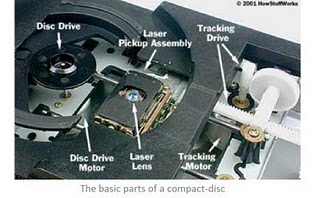Today removable memory planet will talk about the optical storage device that most of us are familiar with is the CD. A CD can store huge amounts of digital information on a very small surface that is incredibly inexpensive to manufacture. The CD surface is a mirror coverd with billions of tiny bumps that are arranged in a long, tightly wound spiral. The CD player reads the bumps with a precise laser and interprets the information as bits of data.
The spiral of bumps on a CD starts in the center. CD tracks are so small that they have to be measured in microns. The CD track is approximately 0.5 microns wide, with 1.6 microns separating one track from the next. The elongated bumps are each 0.5 microns wide, a minimum of 0.83 microns long and 125 nanometers high.
When you play a CD, the laser beam passes through the CD's polycarbonate layer, reflects off the aluminum layer and hits an optoelectronic device that detects changes in light. The bumps reflect light differently than the flat parts of the aluminum layer, which are called lands. The optoelectronic sensor detects these changes in reflectivity, and the electronics in the CD-player drive interpret the changes as data bits.
 |
| Removable memory planet : The basic parts of a compact disc |
Following me next on Removable memory planet!!!!!
No comments:
Post a Comment